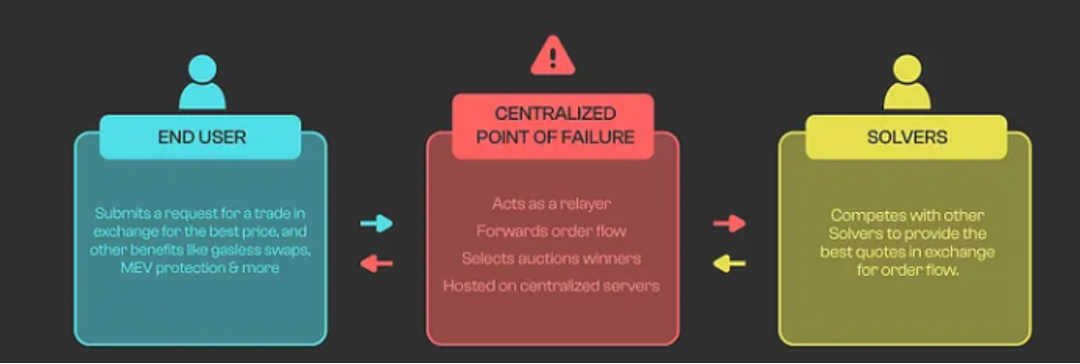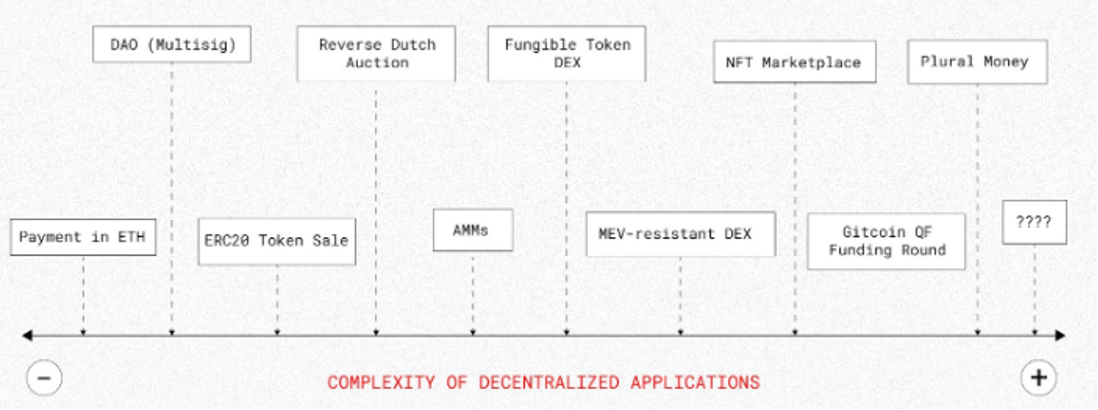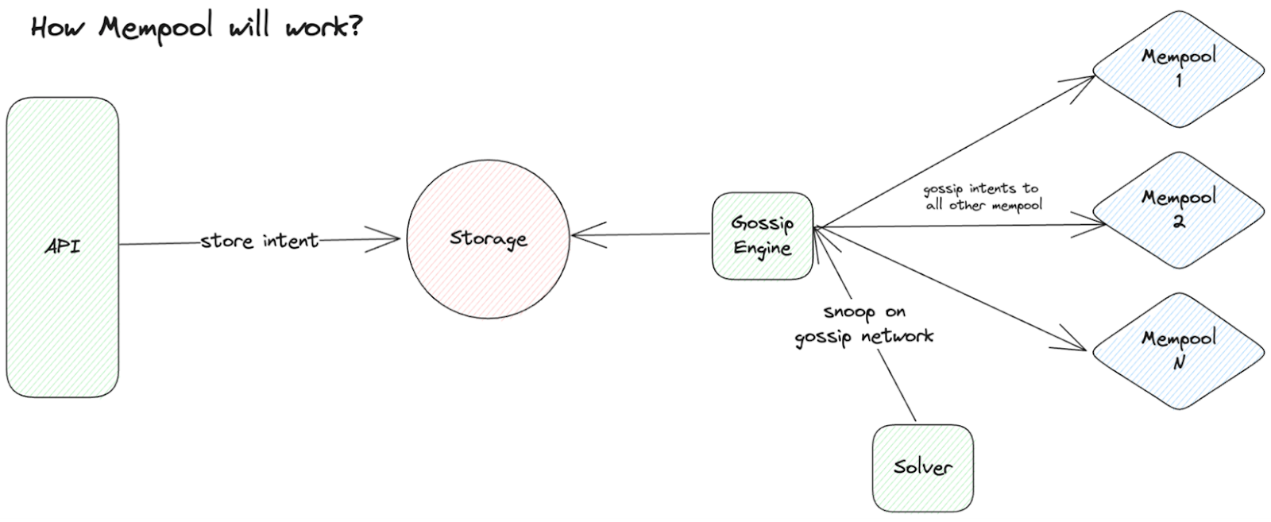How does intent decentralization simplify operations and eliminate complexity?

Reprinted from panewslab
03/21/2025·2MAuthor: Rishabh Nagar
Compiled by: Felix, PANews
Doing anything on the chain right now feels like assembling furniture from IKEA – the steps are numerous, confusing, and always at risk of screwing up. Things can be even more confusing when you have to switch between different blockchains. You need to remember every step, be alert to scams, calculate expenses, and not lose your mind in the process.
Now, imagine that you don’t have to do all kinds of operations on various blockchains—buy, exchange, send tokens through bridges, farm proceeds, and then exchange them back to your favorite cryptocurrency—all you have to do is to say loudly what you want, and the magic is that everything is done safely and smoothly. This is exactly what the "intention" has to do.
Why is intention important in the crypto world?
Intent is like a digital desire. They help users achieve what they want to do on the internet, such as sending money directly and automatically or voting money. In the crypto world, understanding intentions is important because they allow users to control their behavior without the need for middlemen or companies. This makes things faster, cheaper, and safer.
Suppose you want to send a letter to a friend. Traditionally, you would hand it over to a postman who might send it to a large office first and another person would send it to your friend. This is what is commonly done in today's tech world.
Now, if you just press a button, your letter will magically appear in the hands of your friends. This is what the intention is to decentralize—just skip the middleman and do what you want directly, safely and quickly. This is important because it means you don't have to worry about other people's interference, slow down, or lose your letter.
Introduction to decentralization intent
Intent is at the heart of what an individual wants to achieve—whether it is a simple asset transfer or a more complex execution of a series of coordinated transactions. Traditionally, these intentions are managed through centralized systems, but blockchain technology is increasingly allowing it to be implemented in a decentralized way.
For example, consider the intention to participate in a voting for a decentralized autonomous organization (DAO). In traditional settings, interactions are required with a centralized platform where voting can be manipulated, delayed, or even censored. In contrast, in a decentralized system, this intention is expressed through smart contracts, which can automatically collect votes, count votes, and make decisions without the need for central authority.
This shift to decentralized intentions is of great significance because it represents getting rid of the dependence on centralized intermediaries and giving users greater control, transparency and security over their behavior. It allows the creation of systems that can directly implement intent without unnecessary obstacles or risk of third-party intervention.

Source: Paraswap
Intent in decentralized applications
In a decentralized world, intentions can be simple or complex. A simple intention may be similar to executing a transaction on a DEX, where the user's desire to exchange one cryptocurrency for another is processed directly on the chain, and once the necessary conditions are met, the transaction will be automatically completed.
However, intentions can also be complex. Imagine a scenario where users want to optimize their portfolio across multiple decentralized finance (DeFi) platforms to balance income farming, liquidity supply, and automatic trading strategies. This involves not only one action, but also a series of coordinated interactions with various protocols, each with its unique requirements and risks. Here, intention is multifaceted and complex mechanisms are needed to ensure it is implemented in the most efficient way.
In these cases, decentralized mechanisms like smart contracts, oracles, and decentralized or off-chain solvers are starting to work to execute complex intents in a way that requires no trust and transparency. In traditional systems, these complex tasks are impossible to accomplish without centralized control.

Source: Anoma
What is Chain-Agnostic and why intent is needed?
Chain-Agnostic (i.e., compatible with a specific blockchain and is compatible with any blockchain) means you can do what you want on any blockchain. Imagine using the internet: It doesn't matter which Wi-Fi you connect to - you just want to send messages or watch videos.
In the crypto world, intention is like your digital command or wish. In order for them to work smoothly on different blockchains, a kind of Chain-Agnostic is needed. This way, you can easily and securely implement your intentions on any blockchain without understanding or caring about the differences between them.
Chain-Agnostic of Intent
Intent-centered model in the current ecology
In various blockchain ecosystems, intent-centric models are becoming a way to simplify user interaction and improve dApps efficiency. For example, in an ecosystem like Ethereum, intentions are often processed through smart contracts that handle all transactions from DeFi transactions to NFT transactions. These systems are designed to ensure that once users express their intentions, the underlying infrastructure takes care of the rest of the work, including finding counterparties, executing transactions and recording them on the blockchain.
In other ecosystems, such as Polkadot or Cosmos, are exploring intent-centric architectures to take advantage of the interoperability inherent in these networks. For example, in Polkadot, intentions or can be implemented between different parachains, allowing users to interact with various dApps without worrying about underlying technical differences between chains. Similarly, Cosmos is trying to implement cross-chain intent, where users can initiate operations on one chain and complete them on another while maintaining a high level of security and decentralization.

Source: Anoma
Requirements for Chain-Agnostic framework
Despite these advances, the current ecosystem remains largely fragmented, with most intentions related to specific blockchains. This fragmentation can lead to inefficiency. The Chain-Agnostic framework aims to overcome these challenges by providing a unified system in which intentions can be expressed, processed and implemented on any blockchain regardless of its underlying architecture.
In the Chain-Agnostic model, intention is not limited to the general expression of any application or chain. For example, users may express the intention to trade tokens, and the network will handle this intention in the most efficient way regardless of the transaction taking place on Ethereum, Binance Smart Chain, or other blockchains. This approach not only simplifies the user experience, but also enables greater interoperability and composability between dApps on different chains.

Source: Paraswap
Building Chain-Agnostic architecture
To build an intent-centric Chain-Agnostic architecture, several key components are required:
- General Intent: Intent must be designed to be flexible and adaptable, capable of being executed on any blockchain without modification.
- Decentralized counterparty discovery: The system must include a decentralized mechanism for discovering counterparties that can achieve their intentions, regardless of which chain they run.
- Cross-chain solver: The solver responsible for executing the intention must be able to run across multiple blockchains, and determine the best path to implement the intention based on factors such as speed, cost and security.
- General Settlement: Finally, the results of the completion intention must be recorded in a way that is recognized by all blockchains to ensure that the user's operations are verified and secure.
What technical components are involved in the decentralization intention?
Core Components:
- General Intent: These are highly adaptable building blocks that allow users to express results in a decentralized system.
- Solver mechanism: Decentralized agents interpret and implement these intentions, working across different blockchains to achieve user goals, whether it is simple token exchange or complex operations. ——Imagine a solver as a digital personal assistant, listen to your wishes (intentions), and find the best way to implement them across multiple blockchains.
- Counter-trading discovery: In a multi-chain ecosystem, the decentralization process of finding matching and realizing the intent is crucial, ensuring that the correct counterparties are identified without centralized control.
Challenges in memory pool decentralization
Cross-chain open and closed memory pools: Open memory pools allow any solver to access and process intent, thereby increasing transparency, but also bringing risks such as preemptive transactions. On the other hand, enclosing memory pools provide greater security, but at the cost of decentralization. The challenge is to balance openness and security, ensuring that intentions are handled fairly and efficiently on different blockchains. Everyone can see what is going on, but there is a risk that someone might try to use your ideas before you. Enclosing memory pools are similar to private messages—more secure but less transparent.

Source: Ethresearch
How does Ethereum solve the intent problem?
This section highlights a specific case study: ERC-4337, a new standard on the Ethereum chain that changes how user accounts and intent are processed. It aims to provide users with greater flexibility and security by enabling smart contract wallets to perform complex operations independently.
ERC-4337 Overview
ERC-4337 introduces an account abstraction system in Ethereum, aiming to make the Smart Contract Wallet (SCW) more independent and powerful. This new standard allows users to perform complex operations through their wallets without relying on externally owned accounts (EOA), addressing a major limitation in the current Ethereum setup.
Main features:
User Operations (UserOps): ERC-4337 Use UserOps instead of traditional transactions. These are user-signed operations that describe in detail the required operations. Multiple UserOps are collected into another memory pool and bundled together by a specialized entity called a bundler. These bundles are then processed as a single transaction, which increases efficiency.
Resistance to censorship : ERC-4337 is built as decentralized as possible. It is open to the openness of permissionless participation, ensuring that no single entity can review or manipulate UserOps. If all packagers refuse to process UserOp, the system's permissionless nature will encourage new packagers to enter the network and obtain potential profits, making the system vulnerable.
Security Measures : To prevent abuse and attacks, ERC-4337 enforces several rules:
- Gas usage restrictions: By limiting the Gas available to UserOp verification phase, you can protect the packager from denial of service attacks.
- Verification Rules: To prevent unfairly invalidating operations, ERC-4337 separates the verification phase from the execution phase, ensuring that the verified operation is always valid as long as the account status has not changed.
- Reputation System: The packager also uses a reputation system to manage entities that require loose verification rules, ensuring that these entities do not easily destroy the network.
The importance of unified memory pool
ERC-4337 emphasizes the need for a unified memory pool, and all packagers follow the same rules. This unity prevents memory pool fragmentation, and different rules can lead to memory pools smaller, more isolated, and more vulnerable to censorship and attacks. All packagers adopt a consistent rule set to ensure that the network is stronger and more resilient, just as multiple clients of Ethereum adhere to the same protocol rules.
Challenges and solutions
- Risk of fragmentation: If different packagers apply different rules, the network may be fragmented, resulting in smaller and less secure memory pools. ERC-4337 solves this problem by establishing a comprehensive test suite and reference implementation, ensuring that all packagers run compatible and safely.
- Security Exceptions: Although ERC-4337 sets strict rules, exceptions are allowed in some cases. If the packers remain secure and compatible with the main network, they can participate in alternative memory pools with different rules. This flexibility allows innovation while maintaining the overall security and integrity of the system.
A future of decentralization
The future of intention to decentralize lies in overcoming the challenges posed by the current limitations of blockchain infrastructure and the broader ecosystem. With the intention to move from a traditional transaction-based system to a more declarative user-centric model, there is huge potential for improving user experience, reducing inefficiencies and enhancing privacy.
Areas of focus:
- Cross-chain interoperability: Future developments must enable the intent to operate seamlessly across multiple blockchains, leveraging the advantages of each blockchain while maintaining user control and asset custody.
- Decentralized infrastructure: The design of intent pools, whether licensed or non-licensed, will play a key role. While ensuring security and trust, a decentralized approach to allowing open access is essential to extending intent-based applications.
- Reduce centralization risk: With the increasing adoption of intentions, especially standards like ERC-4337, there is a risk of centralization if the intention is dominated by a few entities. Ecosystems must promote competition and innovation to prevent monopolies and ensure fair implementation.
challenge:
- Trust and Transparency: Developers must carefully balance the needs of privacy and security with transparency, ensuring that users can trust the systems that handle their intentions without sacrificing the core principles of decentralization.
- Research and Innovation: The field is still in its infancy and ongoing research is critical to addressing the complexity of intentions expressed, executed, and integration in different fields. Emerging projects like Anoma, SUAVE, Portikus are laying the foundations, but there is still a lot of work to be done.
- While facing challenges, intentional decentralization will make the blockchain space more accessible, secure, and user-friendly—ultimately making it easy for everyone to realize their digital aspirations.
Related reading: Open Intents: Can ERC-7683 become a "Walmart" supermarket with intentions between Ethereum chains?


 chaincatcher
chaincatcher